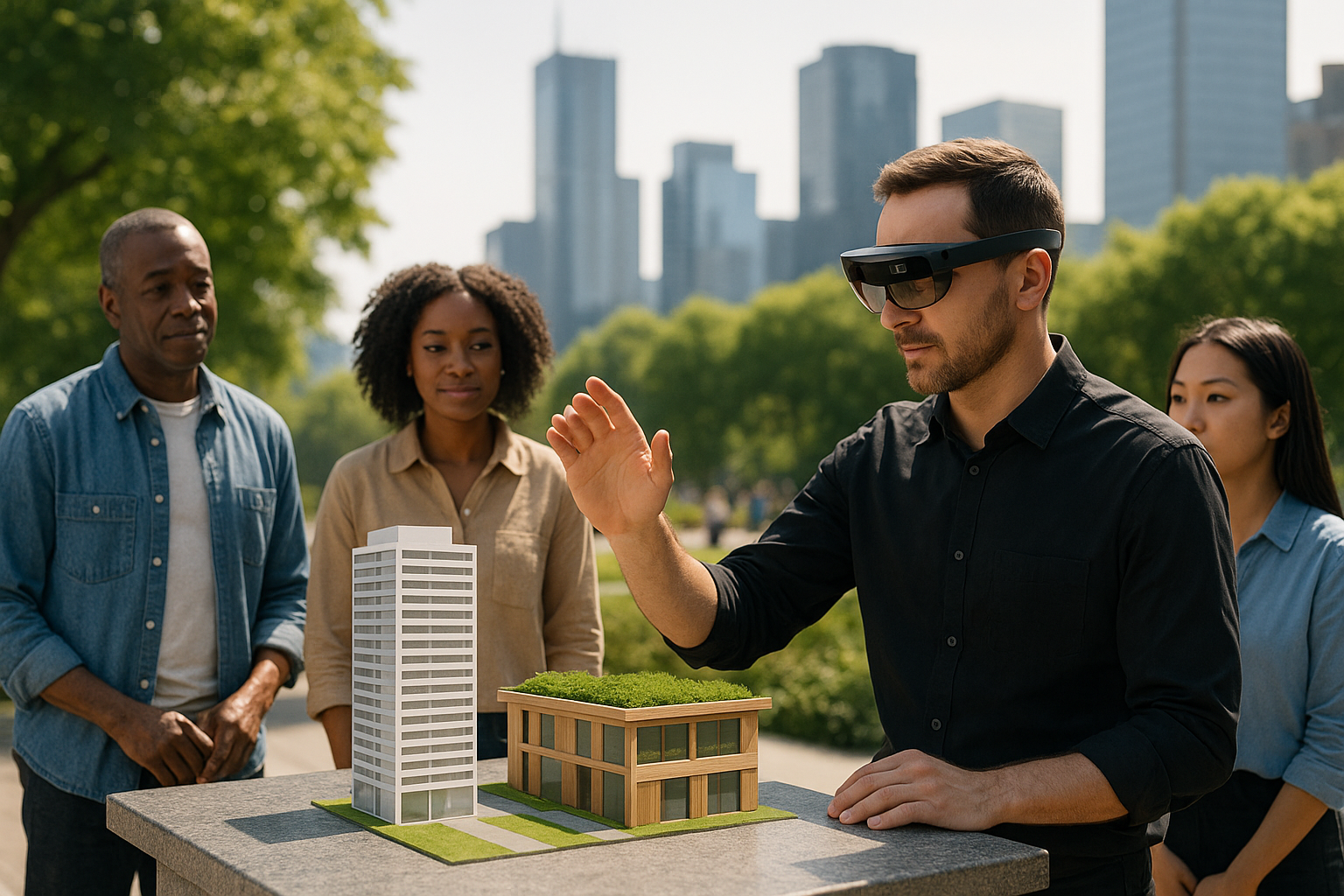As the world faces unprecedented environmental changes, the architecture and construction industries are under growing pressure to lead with sustainable practices. The built environment is responsible for nearly 40% of global carbon emissions, and the urgency to design greener, smarter spaces has never been more pressing. Enter augmented reality (AR): a transformative technology that not only enhances architectural design but also empowers professionals to meet sustainability targets with pre…
From eco-conscious design decisions to waste reduction during construction, AR offers a practical bridge between digital planning and real-world execution. It allows architects, designers, and clients to visualize, evaluate, and adjust designs in real time—ensuring that sustainability in architecture is no longer aspirational, but achievable.
Understanding Sustainability in the Modern Architectural Context
Today, sustainability goes far beyond the use of recyclable materials or energy-efficient appliances. It encompasses a comprehensive philosophy of minimizing environmental impact while maximizing functionality, comfort, and lifecycle performance. Sustainable architecture includes:
- Optimizing energy performance through passive solar design, natural ventilation, and high-performance building envelopes
- Choosing environmentally friendly materials that are non-toxic, locally sourced, renewable, and low in embodied carbon
- Creating flexible spaces that can adapt to changing needs and reduce the need for demolition or reconstruction
- Designing for long-term resilience, including water conservation systems, flood resistance, and urban biodiversity integration
These are not minor add-ons—they are design imperatives. And AR can streamline their integration from the earliest project phases.
How AR Makes Sustainable Design Tangible
1. Visualizing Green Materials and Technologies
AR enables the layering of textures, finishes, and technologies directly onto digital or physical models. Clients can instantly see how low-VOC paints, recycled glass tiles, or living green walls will look in a space, and toggle between conventional and sustainable options. This accelerates decision-making and promotes buy-in for greener choices.
2. Evaluating Daylighting and Energy Flows
Through AR simulations, architects can showcase how natural light penetrates rooms during different seasons or how thermal mass affects comfort levels. This data-driven storytelling not only helps clients grasp the value of sustainable design but also fosters smarter decisions in terms of glazing ratios, shading devices, and HVAC placement.
3. Integrating Smart Home and Renewable Systems
AR can demonstrate how solar panels, rainwater harvesting systems, or smart thermostats integrate into a building’s infrastructure. By offering live overlays of IoT sensor data or solar exposure patterns, AR empowers teams to optimize placement and design configurations in alignment with both sustainability goals and aesthetic vision.
Reducing Construction Waste and Carbon Footprint
Construction and demolition waste make up an enormous portion of landfill mass globally. AR helps reduce this by eliminating ambiguity in drawings, decreasing change orders, and allowing for clash detection before ground is broken. Contractors using AR-based walkthroughs report significantly fewer delays and on-site errors, leading to lower material usage and transportation emissions.
Case Example: Net-Zero Housing Development
In a recent Canadian pilot project, an architecture firm used AR to present a net-zero housing prototype to stakeholders. Features included cross-laminated timber framing, triple-glazed windows, and passive solar orientation. Stakeholders were able to walk through the home in AR, evaluate alternative materials, and finalize design choices before construction. The result: zero rework, 15% cost savings, and a 30% faster permitting process.
Empowering Collaboration and Community Engagement
Sustainability is not achieved in isolation. AR allows designers to engage with communities, regulatory bodies, and interdisciplinary teams more effectively. For public projects, AR-based visualizations can be used in town hall meetings to explain green infrastructure like permeable pavements, bioswales, or urban farms. This transparency fosters trust and enables communities to actively participate in shaping their sustainable future.
The Role of AUGmentecture
Platforms like AUGmentecture are leading the charge by making AR accessible to all stakeholders. With features like easy BIM integration, markerless model viewing, and cloud-based sharing, it becomes simpler for architects to present sustainability in context. Whether it’s reviewing solar panel alignments on-site or comparing insulation options on a mobile device, AUGmentecture bridges the digital-physical divide in sustainable design workflows.
The Future of AR in Sustainable Architecture
As AR evolves, so will its ability to simulate more complex environmental data, integrate with real-time IoT systems, and support AI-assisted design optimizations. Imagine walking through a design and receiving live feedback on carbon footprint, material lifecycle impact, or energy payback periods. This is not far off—and it will transform the architect’s role from visualizer to environmental strategist.
Conclusion
Sustainability in architecture is no longer optional—it’s essential. And AR gives professionals the tools they need to meet that challenge. From conceptual design to construction documentation and community engagement, AR ensures that every decision is guided by both vision and values.
By integrating AR into sustainable design practices, we move closer to creating buildings that serve people, protect the planet, and inspire the future. AUGmentecture invites architects everywhere to lead this change—one augmented decision at a time.




